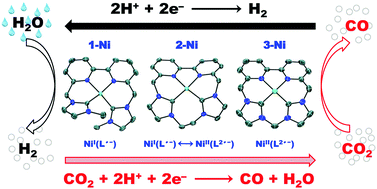Electrocatalytic CO2 reduction with nickel complexes supported by tunable bipyridyl-N-heterocyclic carbene donors: understanding redox-active macrocycles†
Abstract
A series of nickel complexes featuring redox-active macrocycles is reported for electrocatalytic CO2 reduction. A remarkable structure–activity relationship is elucidated from the series through electrochemical studies and DFT calculations, wherein a fine electronic balance between metal and ligand redox chemistry dictates selectivity for CO2 reduction versus the competing proton reduction reaction.



 Please wait while we load your content...
Please wait while we load your content...